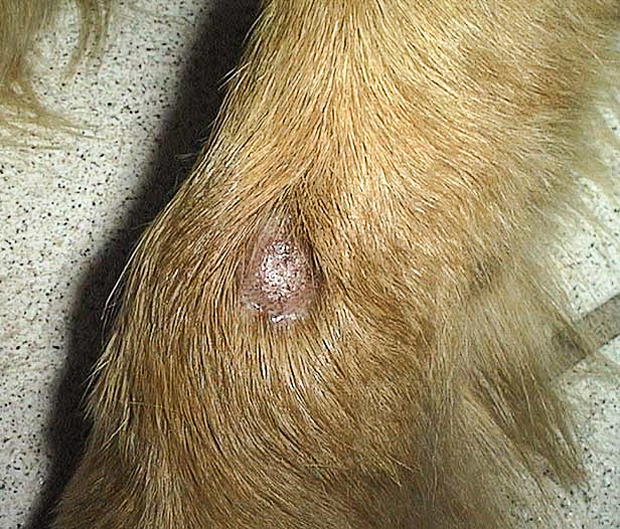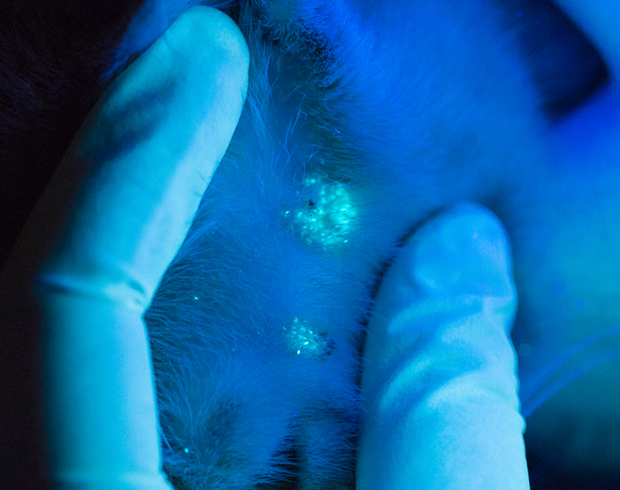By Dr. Carl Palazzolo, DVM, Long Beach Animal Hospital

All photos courtesy of LBAH unless otherwise indicated. Photo by Nataliya Dvukhimenna.
Ringworm is a contagious skin condition found in pets and humans. The scientific name for this disease is dermatophytosis. Ringworm is caused by a fungus and not a worm, and the lesion is not always in the shape of a ring.

The lesion on this dog’s leg is an example of dermatophytosis, or ringworm. Note that it’s not exactly ring shaped.
Since fungi are everywhere in our environment, it is difficult to determine which pets (or people) will develop the problem. The fungus that causes ringworm can be cultured from the hair coats of normal dogs and cats. These pets might be carriers of the disease to other pets as well as people. We tend to see the problem more in young animals.
There are three fungi that cause dermatophytosis:
- Microsporum canis: the most common, and the source is commonly a cat
- Microsporum gypseum: from contaminated soil
- richphyton mentagrophytes: from rodents and the burrows they live in
The usual symptom of dermatophytosis is hair loss, which might go away in one area and appear in another. In some pets there is itchiness or infected nail beds.
Dermatophytosis is diagnosed in one of two different ways:
1. An ultraviolet lamp is shined on the area of hair loss. It will fluoresce if the pet has dermatophytosis. This only happens in Microsporum canis and only 50 percent of the time in this species. Therefore in this test, a positive fluorescence is positive for dermatophytosis but even if the area doesn’t fluoresce, there still can be dermatophytosis present.
2. A fungal culture can be performed. In this test, a few hair follicles around the lesion are plucked and put into a special medium that grows fungi. Fungi are very slow growing, and it could take up to a month for it to grow and test positive.

A special fluorescent light called a Wood’s lamp may be able to detect ringworm in about half the instances.
Oral medications, which need to be used for usually well over a month, used to be the main treatment. However, they have the potential to produce side effects and are not used as routinely since topical shampoos specifically for this disease are effective. In long-haired pets, we might cut the hair short to aid in penetration.
The best way to prevent dermatophytosis is to wash your hands frequently, especially when petting a cat or a dog, and eliminate exposure to rodents. Remember, you can catch ringworm, too. Immunocompromised people should be kept away from a dog or a cat that has dermatophytosis, or the pet should be quarantined until a negative fungal culture is determined.
You can learn more about ringworm from our website here.

